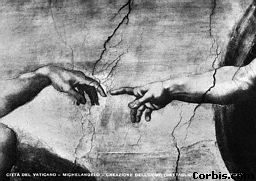


Power Steering Upgrade
My wife was one of the primary drivers of the pickup and one of the few complaints she had was the high effort manual steering. This was further exacerbated by the use of the largest tire I could fit on the truck. Because my daughter, Shelley was going to be the primary driver, we decided to install power steering as one of the incentives to drive the truck. Because she didn't like the "bus like" steering wheel we decided to use a 14" Grant Signature Series leather wrapped steering wheel.
This photo was taken after the power steering conversion kit and box were installed. The conversion kit, supplied by Rez Engineering, is designed to accept a late model power steering box to a '60's vintage Chevrolet pickup frame. The installation was straightforward and locates the new power steering box in the correct geometric position. There are no modifications of the stock steering linkage or rag joint. If using the stock steering column, the steering shaft has to be shortened to accommodate the larger steering box. Because we are installing a tilt steering column from Ididit, the installation is slightly different in where the stock steering shaft is cut and welded. Ididit supplied the Borgenson coupler, which was welded to the shorted stock steering wheel shaft and coupled to the splined Ididit column.
The late model steering box is easily integrated to the frame using the Rez Engineering integration kit. The steering box is a '70's vintage re-circulation ball design with metric hydraulic connections. The problem I found with this setup is the lack of flexibility in selecting custom hydraulic hoses to fit this specific, application. If you want to use the 'standard' GM hoses for this box, you are limited to factory pre-made units, which have mating metric connectors. The problem with this route is the hose lengths and connector fitting angles are difficult to accommodate the myriad installation nuances. After many false starts with modified 'stock' hoses I found a couple of sources who manufacturer custom hoses using type AN or metric fittings. An easy way to deal with this problem is to convert the box fittings from metric to standard AN type connections. This way there are a variety of suppliers who can provide hoses that meet your particular requirements. Deering Engineering will provide the conversion connectors (or you can buy them from Earl) and the hoses with all the necessary connectors. They also offer rubber as well as braided steel lines in any length you specify. Another connection option is metric to flared connectors, which also allows flexibility in vender selection for custom hoses.
Once the decision for installing power steering has been made, the next step is selecting the proper steering performance parameters. There are many enhancements many enthusiasts are not aware are available. Some parameters worth considering are things like; steering ratios; variable ratios; amount of power steering assist; 'on center' feel; and others. I have found some suppliers of 'quick ratio' steering boxes are modified versions of standard 20:1 ratio units. The manufactures offer a lower lock to lock turning ratio box by re-setting the internal stops. This doesn't change the ratio or the sensitivity of the steering, just simply reduces the number turns, lock to lock. There are legitimate companies that build performance steering boxes and pumps and can modify them to meet many of the enthusiasts' requirements. Lee Engineering and GRF both offer performance steering box and power steering pump combinations. Many of these modifications are desirable to not only racers but those who want better 'on center' feel or more 'steering wheel input' feel.
This picture also shows the refurbished suspension components. Everything is reused from the original pieces including the coil springs. The frame, upper and lower control arms and suspension linkage were powder coated semi gloss black and the spindle, coil springs, and steering linkage was painted gray.
The shock absorbers were replaced with Gas Nitro shocks designed to accommodate the 2-Ĺ inch spindle drop.
After doing a through search for a disc brake kit I decided on this particular setup from Early Classic Enterprises because it didn't require modifying stock suspension components, used 6 lug spindles and didn't diminish the excellent stock handling.













(Press LINKS logo above and check it out)



